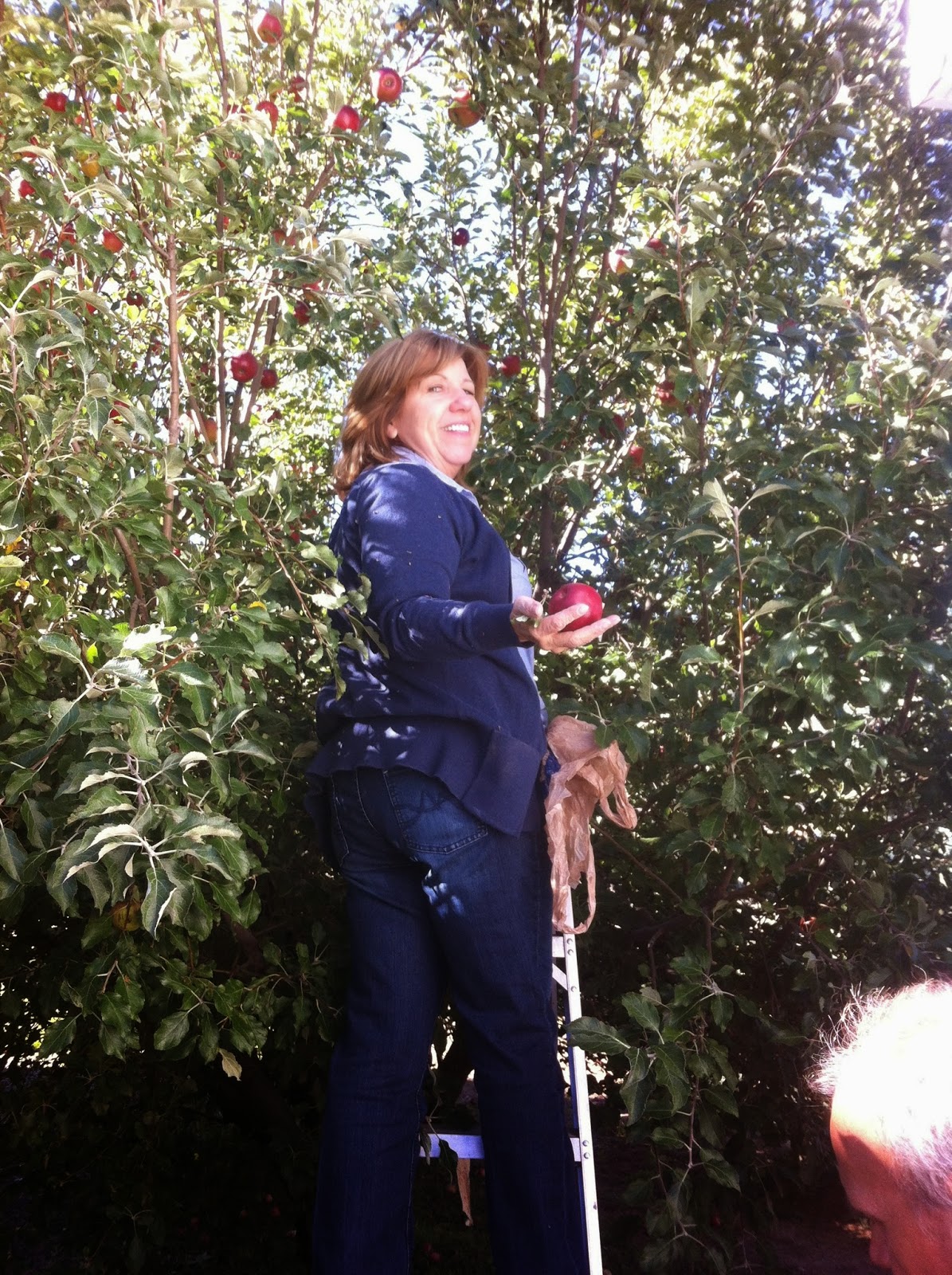The next morning we noticed that his two apple trees had put on quite a crop of apples this year and they were all red, ripe and delicious. Don't know what kind they are, but they are sweet with enough tart to keep you eating them. So we all started picking them. My friends are extremely generous and insisted that we take a bunch home with us. We filled every bag we could find a big box and even a huge cooler. We almost had to sit on our overnight bags to make sure there was room in the SUV to fit all the apples. We ended up with at least a bathtub full, if not more. And we didn't get but a little over half of the apples on the two trees.
 |
| Here's my wife picking apples. |
 |
| If you look closely, you can spot the Royal Bluecrested Apple-picker, a rare bird indeed! |
The kids loved the apple slicer and actually got busy eating apples, as long as they could slice them with the gadget. But even with 15 people living in my house, we were never going to take care of that many apples before they went bad. So Saturday morning, we started canning.
And canning.
We set up a camp stove on the patio and fired up a pot of water to sterilize bottles and another pot to cook the apples a bit to soften them. We also set up a pot to cook apples in the kitchen as well as the water-bath canner. Then we installed the strainer on the island.
 |
| First, we washed the apples. |
We washed bottles and sterilized them, then we packed them full of yummy applesauce that we had run through the strainer. Once full, we put the lids and rings on and processed them through the canner. And repeated. And repeated. And repeated. For eight hours.
 |
| Then we cut them up into halves or quarters depending on what size they were. |
 |
| Then we cooked them in boiling water for a few minutes to soften them up. Not too much, don't want really runny applesauce. |
 |
| Next we dumped them into the hopper of the strainer. This machine is a miracle. Crank the handle and applesauce comes out. |
 |
| Sometimes you have to help move the apples into the grinder chute. |
 |
| The exit chute of the strainer had the skins, the seeds, the stems all mushed up and ready to feed chickens or put in the compost pile. The good stuff goes into the other bowl. |
 |
| The water-bath canner holds 8 pint jars at a time. They took 15 minutes to process once they water got to boiling at the right temperature. |
 |
| 8 hours later, the house smells wonderful and we have more than 100 pints of delicious slightly tart applesauce ready for the pantry. |
When we boxed it up and put it on the shelves in the pantry, the shelves just sort of swallowed them up and made it look like that day's work wasn't so much. But we know better.
It's wonderful to have food put aside for later. It's wonderful to have projects in which many members of the family can participate. It's satisfying to look on the shelves and know that there is great-tasting applesauce waiting to be eaten.
But it's even more wonderful to have friends like Rick and Patty who are so generous and kind that they gave us all those wonderful apples. Makes me want to go back up there and help him prune and trim his trees. A simple "thank you" just doesn't seem sufficient.

%2C_Hoover_Dam_and_Lake_Mead_-_12_June_2012.jpg)







